- You are here:
- Home »
- Indoor Plants
- » Fern Asparagus Care Guide
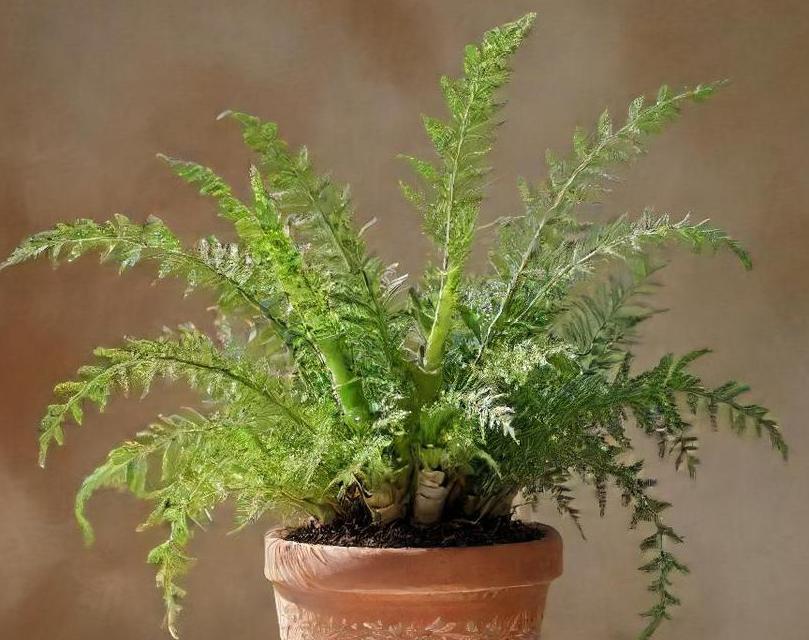
Fern Asparagus Care Guide
In the realm of indoor greenery, fern asparagus stands as an emblem of elegance and resilience. With its delicate foliage and easy care requirements, it has become a beloved choice for indoor gardeners worldwide. This article delves into the intricate world of fern asparagus, exploring its botanical characteristics, historical and cultural significance, as well as its common names and varieties.
Contents
- 1 What Is Fern Asparagus?
- 2 Botanical Characteristics
- 3 Historical And Cultural Significance
- 4 Common Names And Varieties
- 5 Light Requirements
- 6 Soil Requirements
- 7 Temperature Requirements
- 8 Humidity Requirements
- 9 Watering Needs For Fern Asparagus
- 10 Fertilization
- 11 How To Plant Fern Asparagus
- 12 Potting
- 13 Pruning Techniques For Fern Asparagus
- 14 Propagation Methods For Fern Asparagus
- 15 Troubleshooting Problems With Planting Fern Asparagus Indoors
- 16 Conclusion
- 17 FAQS
What Is Fern Asparagus?
Fern asparagus, scientifically known as Asparagus setaceus or Asparagus plumosus, is a species of flowering plant in the Asparagaceae family. Despite its common names, such as "asparagus fern" or "lace fern," it is not a true fern but rather a member of the asparagus genus. Native to South Africa, it is now cultivated and cherished as an ornamental plant in various parts of the world.
This evergreen perennial is renowned for its delicate, feathery foliage, which cascades gracefully from hanging baskets or climbs on supportive structures. Its airy, needle-like leaves give it a light and airy appearance, adding a touch of freshness to any indoor space. While primarily grown as an indoor plant, fern asparagus can also thrive in outdoor gardens in regions with mild climates.
Botanical Characteristics
Foliage: The most striking feature of fern asparagus is its foliage. The leaves are composed of numerous tiny leaflets, resembling delicate needles or feathers. These leaflets grow along arching stems, creating a lush and cascading effect. The foliage ranges in color from bright green to deep emerald, adding vibrancy to any environment.
Stems: Fern asparagus typically produces long, wiry stems that emerge from the base of the plant. These stems are flexible yet sturdy, allowing the plant to drape elegantly over containers or climb with the support of trellises or stakes.
Flowers and Berries: While fern asparagus is primarily grown for its foliage, it does produce small, inconspicuous flowers and berries under the right conditions. The flowers are white or pale pink and appear in clusters along the stems. The subsequent berries are green when immature, eventually turning red or black as they ripen.
Roots: The root system of fern asparagus consists of fibrous roots that spread horizontally in the soil. These roots are relatively shallow, making the plant well-suited for container cultivation.
Historical And Cultural Significance

Fern asparagus has a rich history intertwined with human culture and horticulture. Originating from South Africa, it has been cultivated and admired for centuries for both its ornamental value and its potential medicinal properties.
Cultural Symbolism: In many cultures, fern asparagus is associated with concepts of prosperity, fertility, and good fortune. Its lush green foliage symbolizes abundance and growth, making it a popular choice for weddings, celebrations, and as a gift for loved ones.
Medicinal Uses: While primarily grown as an ornamental plant, fern asparagus has also been utilized in traditional medicine systems for its purported medicinal properties. In some cultures, extracts from the plant have been used to treat ailments such as digestive disorders, respiratory issues, and even as a diuretic.
Horticultural Legacy: Over the centuries, fern asparagus has captured the imagination of botanists, horticulturists, and garden enthusiasts alike. Its graceful form and adaptability have made it a staple in botanical gardens, greenhouses, and indoor landscapes worldwide. Through selective breeding and cultivation, numerous cultivars and varieties have been developed, further enhancing its allure and diversity.
Common Names And Varieties
Fern asparagus is known by a variety of common names, reflecting its widespread popularity and diverse forms. While the species Asparagus setaceus is the most commonly cultivated, there are several notable varieties that exhibit unique characteristics and traits.
Common Names: The most widely recognized common names for fern asparagus include "asparagus fern," "lace fern," and "plume asparagus." These names refer to the plant’s fern-like foliage and asparagus-like growth habit.
Varieties: Several cultivars of fern asparagus have been developed to cater to different preferences and growing conditions. Some popular varieties include:
- Asparagus setaceus ‘Nanus’: This compact variety features shorter stems and smaller foliage, making it ideal for small containers or hanging baskets.
- Asparagus setaceus ‘Meyersii’: Also known as the foxtail fern, this cultivar is prized for its densely packed, upright stems that resemble the tail of a fox.
- Asparagus setaceus ‘Variegatus’: Variegated varieties of fern asparagus feature leaves with creamy white or yellow streaks, adding a splash of color to indoor gardens.
Each variety offers its own unique charm and can be incorporated into indoor landscapes to create stunning displays and focal points.
Fern asparagus, with its graceful foliage and easy care requirements, has earned its place as a beloved indoor plant worldwide. Its botanical characteristics, historical significance, and diverse varieties make it a fascinating subject for gardeners and plant enthusiasts alike. Whether adorning a hanging basket, climbing a trellis, or accentuating a floral arrangement, fern asparagus continues to captivate with its timeless elegance and beauty. As we continue to appreciate and cultivate this remarkable plant, its legacy will undoubtedly endure for generations to come.
Appearance
Fern Asparagus, scientifically known as Asparagus aethiopicus, is a versatile and visually appealing indoor plant that adds a touch of elegance to any space. Belonging to the Asparagaceae family, this plant is native to South Africa and is commonly referred to as the Asparagus Fern or Foxtail Fern. Despite its name, it is not a true fern but rather a member of the asparagus genus. Its delicate, feathery foliage and trailing habit make it a popular choice for both indoor and outdoor settings, though it thrives particularly well indoors under the right conditions.
The Fern Asparagus features long, slender stems covered in small, needle-like leaves that resemble the fronds of a fern. The foliage is typically a bright, vibrant green, though some cultivars may have variations in color, including variegated forms with white or yellow markings. As the plant matures, it produces small, inconspicuous white flowers that eventually give way to red or orange berries, adding seasonal interest to its appearance.
Light Requirements
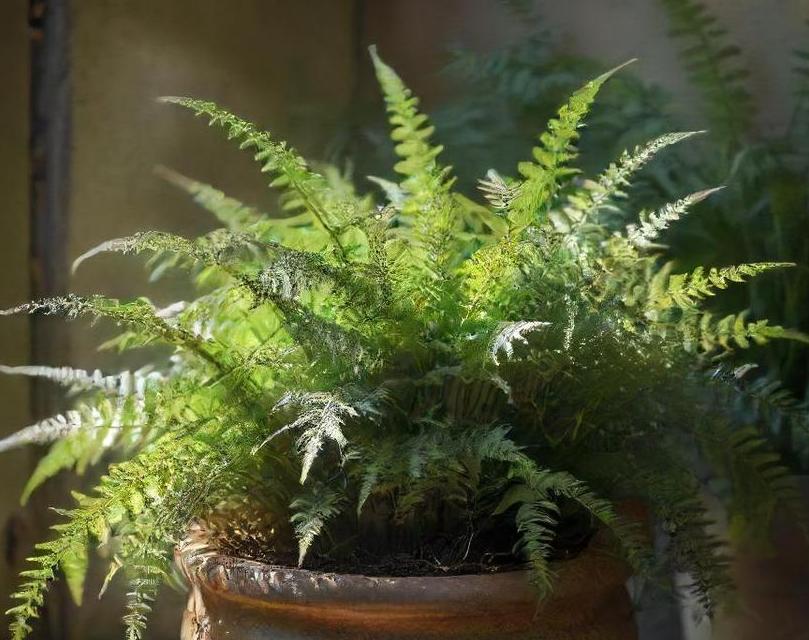
Proper lighting is crucial for the health and growth of Fern Asparagus. While this plant can tolerate a range of light conditions, it thrives in bright, indirect light. Placing it near a north- or east-facing window is ideal, as it receives ample sunlight without being exposed to direct rays that could scorch its delicate foliage. Inadequate light can result in leggy growth and a loss of vibrancy in the leaves, while too much direct sunlight may cause sunburn or leaf discoloration.
Low Light Conditions
Fern Asparagus can adapt to lower light conditions, but its growth may become slow, and the foliage may appear less lush. In such environments, it’s essential to place the plant near a source of filtered light or provide supplemental artificial lighting, such as fluorescent or LED grow lights, to ensure its vitality.
High Light Conditions
While Fern Asparagus prefers bright, indirect light, it can tolerate short periods of direct sunlight, especially during the morning hours. However, prolonged exposure to intense sunlight can lead to sunburn and foliage damage. If the plant is exposed to excessive sunlight, it’s advisable to move it to a location with more shade or filter the light using sheer curtains or blinds.
Soil Requirements
Choosing the right soil composition is vital for maintaining optimal growing conditions for Fern Asparagus. A well-draining, nutrient-rich potting mix is ideal for supporting healthy root development and preventing waterlogged conditions, which can lead to root rot. A combination of peat moss, perlite, and coarse sand creates a lightweight, aerated substrate that promotes root aeration and moisture retention without becoming overly compacted.
Soil Ph
Fern Asparagus thrives in slightly acidic to neutral soil conditions, with a pH range between 6.0 and 7.0. Soil pH outside of this range can impede nutrient uptake and affect overall plant health. Regular monitoring of soil pH levels through testing kits or meters allows for timely adjustments to maintain optimal growing conditions.
Drainage
Good drainage is essential for preventing waterlogged soil, which can suffocate the roots and lead to fungal diseases. When selecting a pot or container for Fern Asparagus, ensure it has adequate drainage holes at the bottom to allow excess water to escape freely. Additionally, incorporating drainage materials such as gravel or clay shards at the bottom of the pot can further enhance drainage efficiency.
Temperature Requirements
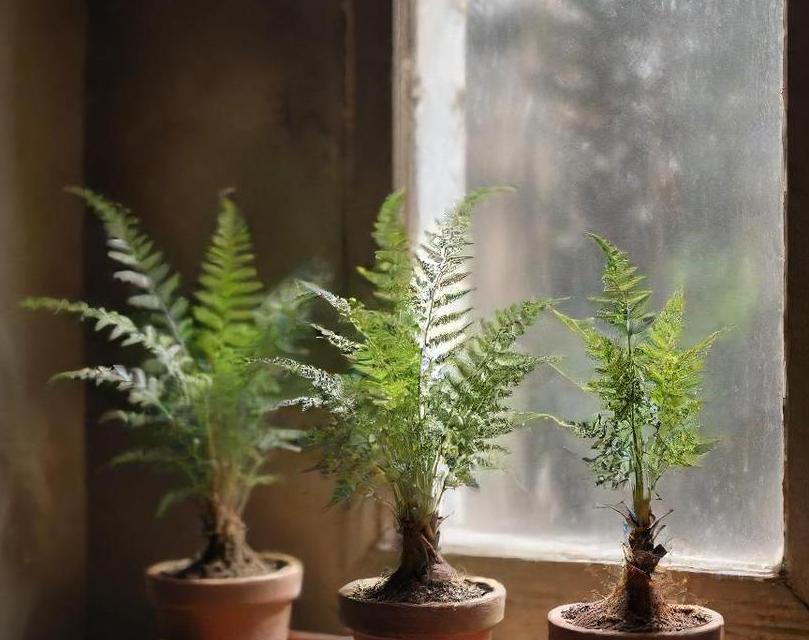
Fern Asparagus thrives in moderate temperatures typical of indoor environments, making it well-suited for cultivation as a houseplant. While it can tolerate a range of temperatures, it prefers consistent conditions without exposure to extreme heat or cold. Understanding its temperature requirements is essential for ensuring its health and vitality throughout the year.
Ideal Temperature Range
The ideal temperature range for Fern Asparagus is between 60°F and 75°F (15°C to 24°C). Maintaining temperatures within this range provides optimal growing conditions and encourages steady growth and foliage production. Avoid placing the plant near drafty windows, air conditioning vents, or heat sources such as radiators, as sudden temperature fluctuations can stress the plant.
Winter Care
During the winter months, when indoor heating systems may lead to drier air and fluctuating temperatures, it’s essential to provide supplemental humidity and insulation for Fern Asparagus. Placing a humidity tray filled with water and pebbles beneath the plant or using a room humidifier helps maintain adequate moisture levels in the surrounding air, preventing dehydration of the foliage.
Humidity Requirements
As a native of subtropical regions, Fern Asparagus thrives in environments with high humidity levels. Indoor settings, especially during the winter months or in air-conditioned spaces, often have lower humidity levels, which can adversely affect the plant’s health. Providing adequate humidity is essential for preventing dehydration and maintaining lush foliage.
Natural Humidity
In its natural habitat, Fern Asparagus benefits from the high humidity levels found in subtropical climates. Mimicking these conditions indoors can be challenging but is achievable through various methods. Grouping plants together, misting the foliage regularly, or placing a shallow tray filled with water and pebbles nearby can increase ambient humidity levels around the plant.
Humidity Tray
A humidity tray is a simple yet effective way to boost humidity levels around Fern Asparagus. To create a humidity tray, place a shallow tray or saucer filled with water and pebbles beneath the plant’s container. As the water evaporates, it creates a humid microclimate around the plant, helping to prevent moisture loss through transpiration and maintaining healthy foliage.
Room Humidifier
For larger indoor spaces or areas with consistently low humidity levels, using a room humidifier can provide consistent moisture levels beneficial for Fern Asparagus and other humidity-loving plants. By adjusting the humidity settings on the humidifier, you can create an environment that closely resembles the plant’s natural habitat, promoting vigorous growth and lush foliage.
Fern Asparagus, with its graceful foliage and easygoing nature, makes a delightful addition to any indoor space. By understanding its light, soil, temperature, and humidity requirements, you can create an optimal environment for this versatile plant to thrive. Whether placed in a bright, indirect light spot near a window or provided with supplemental humidity during dry periods, Fern Asparagus rewards caretakers with its resilience and beauty. With proper care and attention, this charming indoor plant will continue to brighten your home or office space for years to come.
Watering Needs For Fern Asparagus
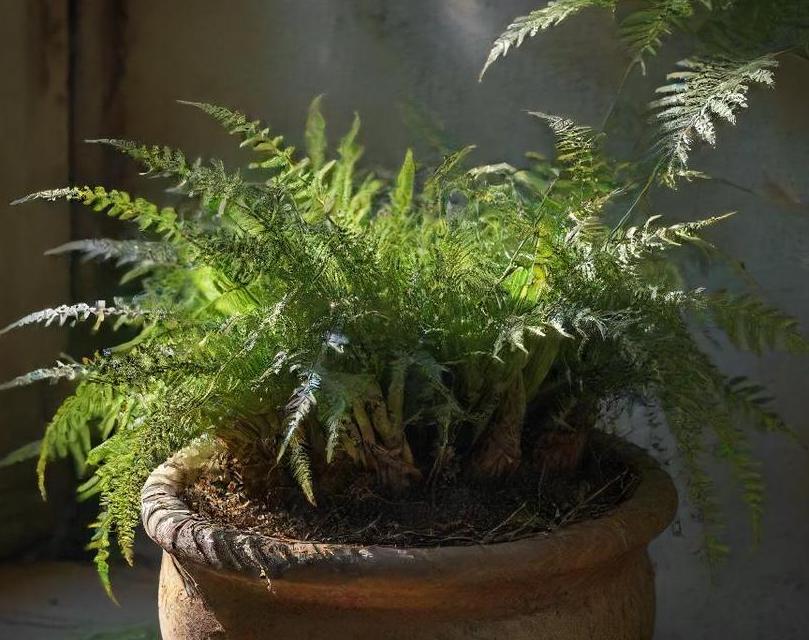
Fern Asparagus, scientifically known as Asparagus setaceus, is a popular indoor plant cherished for its delicate, feathery foliage and graceful cascading habit. Often referred to as the "Asparagus Fern," this plant is not actually a true fern but rather a member of the lily family (Asparagaceae). Native to South Africa, Fern Asparagus has gained widespread popularity as a versatile and low-maintenance houseplant, ideal for adding a touch of greenery and elegance to indoor spaces.
With its airy foliage composed of numerous needle-like leaves, Fern Asparagus adds a refreshing and natural aesthetic to any room. Its trailing stems make it an excellent choice for hanging baskets, while it also thrives as a trailing accent in mixed container plantings. Understanding the care requirements, including watering, fertilization, and planting techniques, is essential for nurturing a healthy and vibrant Fern Asparagus plant.
Proper watering is crucial for the health and vitality of Fern Asparagus. While this plant is relatively forgiving of occasional lapses in watering, it thrives when provided with consistent moisture. However, overwatering can lead to root rot, so it’s essential to strike a balance.
Monitoring Soil Moisture
Before watering your Fern Asparagus, always check the moisture level of the soil. Insert your finger about an inch into the soil near the base of the plant. If the soil feels dry to the touch, it’s time to water. Conversely, if the soil feels moist, hold off on watering until it dries out slightly.
Watering Frequency
During the growing season, typically spring through summer, Fern Asparagus benefits from regular watering. Aim to water the plant thoroughly whenever the top inch of soil feels dry. Water until excess moisture drains from the bottom of the pot, ensuring thorough hydration while preventing waterlogging.
In winter, when Fern Asparagus enters a period of dormancy, reduce watering frequency. Allow the soil to dry out slightly between waterings, but be mindful not to let it become completely dry. Adjust watering frequency based on environmental factors such as indoor humidity and temperature.
Watering Technique
When watering Fern Asparagus, it’s essential to water the soil directly rather than the foliage. Pour water gently onto the soil surface until it begins to drain from the bottom of the pot. Avoid splashing water onto the leaves, as this can promote fungal diseases and lead to unsightly spotting.
Fertilization
Fertilizing Fern Asparagus helps promote healthy growth and vibrant foliage. However, excessive fertilization can result in fertilizer burn or cause the plant to become leggy and less compact. Therefore, it’s essential to follow a balanced fertilization regimen tailored to the plant’s needs.
Choosing Fertilizer
Select a balanced, water-soluble fertilizer formulated for indoor foliage plants. Look for a fertilizer with an NPK ratio (nitrogen, phosphorus, potassium) of around 10-10-10 or similar. Avoid high-nitrogen fertilizers, as they can stimulate excessive foliage growth at the expense of root and stem development.
Fertilizing Schedule
During the active growing season in spring and summer, fertilize Fern Asparagus every four to six weeks. Dilute the fertilizer to half or quarter strength to avoid overfeeding. In autumn and winter, when growth slows, reduce fertilization frequency to once every two to three months.
Application Method
When applying fertilizer to Fern Asparagus, dilute the recommended amount in water according to the instructions on the fertilizer packaging. Water the plant thoroughly with the diluted fertilizer solution, ensuring even distribution. Avoid getting fertilizer on the foliage, as it can cause burns.
How To Plant Fern Asparagus
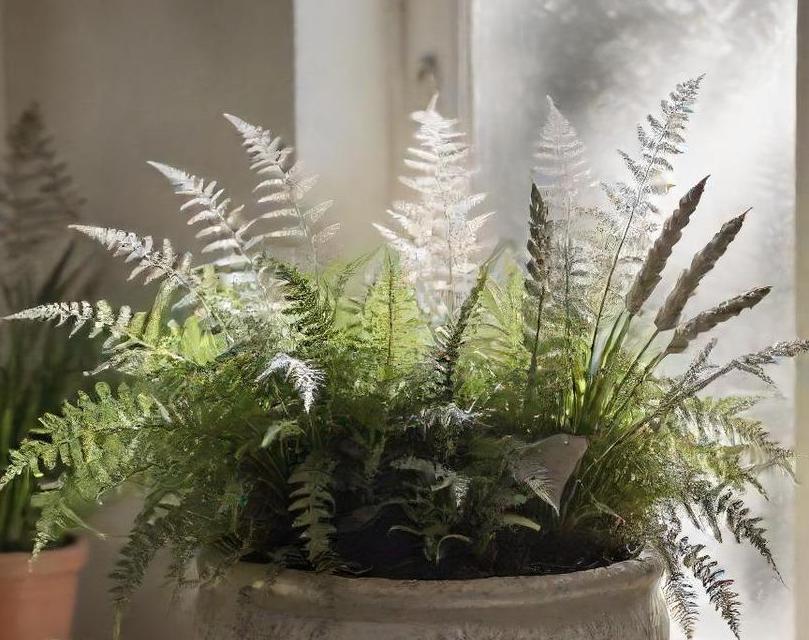
Planting Fern Asparagus correctly sets the foundation for healthy growth and development. Whether starting with a young plant or propagating from cuttings, following proper planting techniques is essential for success.
Selecting A Container
Choose a container with adequate drainage holes to prevent waterlogging, as Fern Asparagus is susceptible to root rot in soggy soil. Select a pot that is slightly larger than the plant’s root ball, allowing room for growth without excessive soil compaction.
Preparing The Soil
Use a well-draining potting mix formulated for indoor plants or create a custom blend using equal parts peat moss, perlite, and coarse sand. Avoid heavy soils that retain moisture, as they can lead to root rot. Fill the bottom of the pot with a layer of drainage material, such as gravel or broken pottery shards, to improve drainage.
Transplanting Fern Asparagus
Carefully remove Fern Asparagus from its nursery container, taking care not to damage the roots. Gently loosen any compacted roots and inspect for signs of disease or pest infestation. Place the plant in the center of the prepared pot and fill in the remaining space with potting mix, pressing lightly to secure the plant in place.
Watering After Planting
After planting Fern Asparagus, water thoroughly to settle the soil and hydrate the roots. Ensure that excess water drains freely from the bottom of the pot. Keep the newly planted Fern Asparagus in a location with bright, indirect light to minimize transplant shock and encourage healthy growth.
Potting
Repotting Fern Asparagus periodically is necessary to prevent the plant from becoming root-bound and to refresh the potting mix. Repotting also provides an opportunity to inspect the plant’s roots and remove any dead or damaged growth.
Signs It’s Time To Repot
Monitor Fern Asparagus for signs that it has outgrown its current container. These signs include roots emerging from the drainage holes, reduced growth or yellowing foliage, and soil that dries out quickly despite regular watering. Repotting is best done in spring or early summer when the plant is actively growing.
Choosing A New Container
Select a slightly larger pot with drainage holes to accommodate Fern Asparagus’s growing root system. Ensure that the new pot has enough room for at least a year or two of growth before requiring repotting again. Clean the new pot thoroughly before transferring the plant to prevent the spread of disease.
Repotting Process
Carefully remove Fern Asparagus from its current container, gently teasing apart any tangled roots. Trim any dead or rotting roots with sterilized pruning shears to promote healthy growth. Place a layer of fresh potting mix in the bottom of the new pot, then position the plant in the center and fill in around it with additional potting mix. Water thoroughly after repotting to settle the soil and hydrate the plant.
Aftercare
After repotting, place Fern Asparagus in a location with bright, indirect light and avoid direct sunlight, which can stress the plant. Resume regular watering and fertilization, adjusting as needed to accommodate the plant’s new growth and pot size.
Fern Asparagus, with its graceful foliage and cascading habit, is a charming addition to any indoor space. By providing the proper care, including adequate watering, balanced fertilization, and careful planting techniques, you can enjoy healthy and vibrant growth from this versatile houseplant. Whether displayed in hanging baskets, mixed containers, or as a standalone specimen, Fern Asparagus brings a touch of natural beauty and elegance to your home or office environment. With attention to detail and a bit of nurturing, your Fern Asparagus plant will thrive and reward you with its lush foliage for years to come.
Pruning Techniques For Fern Asparagus
Fern Asparagus, scientifically known as Asparagus setaceus, is a charming and versatile indoor plant that adds a touch of elegance to any living space. Belonging to the Asparagaceae family, this plant is native to South Africa and is commonly referred to as the "Asparagus Fern" or "Lace Fern" due to its delicate, feathery foliage. Despite its name, the Fern Asparagus is not a true fern but rather a member of the asparagus family, characterized by its fine, needle-like leaves that cascade gracefully from its stems.
The Fern Asparagus is a popular choice among plant enthusiasts for several reasons. Not only does it possess aesthetic appeal with its airy foliage and trailing habit, but it also requires minimal care, making it ideal for both novice and experienced gardeners alike. Additionally, this versatile plant can thrive in a variety of indoor conditions, from bright, indirect light to lower light levels, making it suitable for almost any room in the house.
Pruning plays a crucial role in maintaining the health and appearance of Fern Asparagus plants. Regular pruning helps to promote new growth, remove dead or damaged foliage, and control the plant’s size and shape. Here are some pruning techniques to keep your Fern Asparagus looking its best:
1. Removing Dead Or Yellowing Foliage
Inspect your Fern Asparagus regularly and remove any dead or yellowing foliage using clean, sharp scissors or pruning shears. Dead or yellow leaves not only detract from the plant’s appearance but can also attract pests and diseases if left unchecked.
2. Trimming Overgrown Stems
If your Fern Asparagus has become leggy or overgrown, trim back the stems to encourage bushier growth. Identify the longest stems and use sharp scissors or pruning shears to trim them back to a desired length. Make clean cuts just above a leaf node to promote new growth.
3. Shaping The Plant
To maintain a neat and compact appearance, shape your Fern Asparagus by selectively pruning its stems. Remove any excessively long or unruly stems to create a balanced silhouette. You can also pinch back the tips of the stems to encourage branching and a fuller growth habit.
4. Pruning For Propagation
Pruning can also be used as a method of propagation for Fern Asparagus. Select healthy stems with several leaf nodes and use sharp scissors or pruning shears to cut them into sections, making sure each section has at least one node. Place the cuttings in a pot filled with well-draining potting mix, water them thoroughly, and keep them in a warm, humid environment until they root and begin to grow.
Propagation Methods For Fern Asparagus
Propagating Fern Asparagus is relatively straightforward and can be done using several methods, including division, seeds, and stem cuttings. Here’s a step-by-step guide to each propagation method:
1. Division
Division is perhaps the simplest method of propagating Fern Asparagus and is best done during repotting in the spring. Carefully remove the plant from its pot and gently separate the root ball into smaller sections, making sure each section has roots attached. Replant the divided sections in individual pots filled with fresh potting mix and water them thoroughly.
2. Seeds
While Fern Asparagus can produce small, red berries containing seeds, propagating it from seeds can be a slow and unpredictable process. To collect seeds, allow the berries to ripen and turn red on the plant, then harvest them and remove the seeds. Sow the seeds in a pot filled with moist potting mix, cover them lightly with soil, and keep them consistently moist until they germinate, which can take several weeks to months.
3. Stem Cuttings
Stem cuttings are a quick and reliable way to propagate Fern Asparagus and are best taken during the plant’s active growing season in spring or summer. Select healthy stems with several leaf nodes and use sharp scissors or pruning shears to cut them into 3-4 inch sections. Remove the lower leaves from each cutting and dip the cut end in rooting hormone, if desired, to encourage root growth. Plant the cuttings in pots filled with well-draining potting mix, water them thoroughly, and place them in a warm, bright location out of direct sunlight. Keep the soil consistently moist until the cuttings root and begin to grow.
Troubleshooting Problems With Planting Fern Asparagus Indoors
While Fern Asparagus is generally a low-maintenance plant, it can sometimes encounter issues that affect its health and appearance. Here are some common problems you may encounter when growing Fern Asparagus indoors, along with tips on how to address them:
1. Yellowing Or Browning Foliage
Yellowing or browning foliage is often a sign of overwatering or underwatering. Check the soil moisture regularly and adjust your watering schedule accordingly. Ensure that the pot has drainage holes to prevent waterlogged soil, and always allow the top inch of soil to dry out between waterings. Trim away any damaged foliage to encourage new growth.
2. Pest Infestations
Fern Asparagus is susceptible to pest infestations, including spider mites, mealybugs, and scale insects. Inspect your plant regularly for signs of pests, such as webbing, sticky residue, or tiny insects on the foliage. If pests are present, gently wash the plant with a mild soap solution or neem oil spray to remove them. For severe infestations, you may need to use insecticidal soap or horticultural oil to eradicate the pests.
3. Fungal Diseases
Fungal diseases, such as root rot and powdery mildew, can occur if the plant is exposed to excessive moisture or poor air circulation. To prevent fungal diseases, avoid overwatering and ensure that the plant has adequate airflow around its foliage. If fungal issues arise, remove affected foliage and improve ventilation around the plant. You can also treat fungal diseases with fungicidal sprays or neem oil.
4. Leggy Growth
Leggy growth occurs when the plant does not receive enough light or is not pruned regularly. To prevent leggy growth, place your Fern Asparagus in a bright location with indirect sunlight and prune it regularly to encourage bushier growth. You can also rotate the plant periodically to ensure even exposure to light on all sides.
Conclusion
Fern Asparagus is a delightful addition to any indoor garden, with its graceful foliage and easy-care nature. By following the pruning techniques outlined in this guide, you can maintain the health and appearance of your Fern Asparagus plant, promoting lush growth and a balanced silhouette. Additionally, mastering the propagation methods discussed will allow you to expand your Fern Asparagus collection and share its beauty with friends and family.
While caring for Fern Asparagus indoors, be mindful of common problems such as yellowing foliage, pest infestations, and fungal diseases, and take proactive measures to address them promptly. With proper care and attention, your Fern Asparagus plant will thrive and bring joy and beauty to your home for years to come.
FAQS
What Is An Indoor Plant: Fern Asparagus?
Indoor Plant: Fern Asparagus, also known as Asparagus setaceus or Asparagus fern, is a species of flowering plant in the Asparagaceae family. Despite its name, it is not a true fern but rather a member of the asparagus family. It is popular for its delicate, feathery foliage and is commonly grown indoors as a decorative plant.
How Do I Care For An Indoor Plant: Fern Asparagus?
Indoor Plant: Fern Asparagus requires moderate care to thrive. It prefers bright, indirect light but can tolerate some shade. Keep the soil consistently moist but not waterlogged, and ensure proper drainage to prevent root rot. Regular misting can help maintain humidity, especially in drier environments. Fertilize lightly during the growing season, and prune occasionally to maintain its shape.
What Kind Of Soil Does An Indoor Plant: Fern Asparagus Need?
Indoor Plant: Fern Asparagus prefers well-draining, slightly acidic soil. A mixture of peat moss, perlite, and potting soil works well. Ensure that the soil is loose and airy to allow for proper root growth and drainage.
How Often Should I Water My Indoor Plant: Fern Asparagus?
Watering frequency for Indoor Plant: Fern Asparagus depends on various factors such as temperature, humidity, and pot size. Generally, water when the top inch of soil feels dry to the touch, typically once or twice a week. Avoid overwatering, as this can lead to root rot, but also ensure that the plant does not dry out completely.
Can Indoor Plant: Fern Asparagus Tolerate Low Light Conditions?
While Indoor Plant: Fern Asparagus prefers bright, indirect light, it can tolerate lower light conditions. However, prolonged exposure to low light may result in leggy growth and reduced vigor. If grown in low light, consider supplementing with artificial grow lights to maintain its health and appearance.
Is Indoor Plant: Fern Asparagus Toxic To Pets?
Yes, Indoor Plant: Fern Asparagus is toxic to pets if ingested. The plant contains sapogenins, which can cause gastrointestinal upset, vomiting, and diarrhea in cats and dogs. Therefore, it is essential to keep this plant out of reach of pets or opt for pet-friendly alternatives if you have animals in your home.
How Can I Propagate Indoor Plant: Fern Asparagus?
Indoor Plant: Fern Asparagus can be propagated through division or by planting its seeds. Division involves separating the plant into smaller sections, each with roots attached, and replanting them in individual pots. To propagate from seeds, collect ripe berries from the plant, remove the seeds, and plant them in a well-draining potting mix. Keep the soil consistently moist until the seeds germinate, which typically takes a few weeks.
